Essay on Mahatma Gandhi: All important information about Mahatma Gandhi is discussed in this article. Read the article till the end for complete details about How to write a short and long essay on Mahatma Gandhi in English.
The first essay is a long essay on Mahatma Gandhi of 1000-1500 words. This long essay about Mahatma Gandhi is suitable for students of classes 7, 8, 9 and 10, 11, and 12, and also for competitive exam aspirants.
The second essay is a short essay on Mahatma Gandhi of 400-500 words. These are suitable for students and children in classes 3, 4, 5, and 6. In the last of this Mahatma Gandhi essay, some important questions related to Gandhiji are given.
Contents
Essay on Mahatma Gandhi in English 1000+ Words
Long essay on Mahatma Gandhi in English For Students of classes 7, 8, 9, 10, 11, 12 and also Competitive exam aspirants.
Introduction
Essay on Mahatma Gandhi – Mohandas Karamchand Gandhi, called Mahatma, is the father of our nation. He was born on 2 October 1869 at Porbandar in Gujarat. His birthday on 2nd October is observed worldwide as the international day of non-violence. He belonged to a well-to-do family, his father being attached to the royal court of Rajkot. He was not quite good at studies but he took great care of his character.
His father Karamchand Uttamchand Gandhi was Chief Minister (Diwan) of Porbander. Harilal, Manilal, Ramdas, and Devdas were Gandhiji’s four sons. Mahatma Gandhi was one of the great leaders of the Indian Independence movement against British rule. Gandhiji inspired civil rights and freedom movements across the world.

| Born | 2 October 1869 at Porbandar in Gujarat |
| Died | on 30 January 1948 |
| Parents | Karamchand Uttamchand Gandhi (Father); Putlibai (Mother) |
| Movement | Champaran Satyagraha Rowlatt Act Dandi March Gandhi Irwin Pact Quit India Movement |
| Slogan | “Do or Die” |
| Wife | Kasturba Gandhi |
| Political Guru of Mahatma Gandhi | Gopalkrishna Gokhale |
| Spiritual guru | Leon Tolstoy |
Mohandas Karamchand Gandhi or Mahatma Gandhi was an Indian lawyer, active politician, and freedom fighter. He was the greatest freedom fighter who proved to the world that the greatest of battles could be fought and won by applying peaceful methods.
Education of Mahatma Gandhi
At the age of 14, he married Kasturba Gandhi. Later he went to England to study law. The traditional Brahmins created a lot of hindrances in his way as they considered crossing the seas to be against the religious tenets. In England, Gandhiji found great difficulty in getting vegetarian food, but at last, he was able to locate a restaurant that served such food.
Mahatma Gandhi did law in England and returned to India as a barrister in 1891. He started practice at Rajkot and Bombay but failed. He was a young man of shy nature and it is said that when he appeared before the judge for the first time in order to plead for a case, he could not utter a single word.
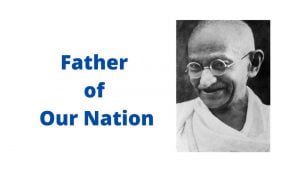
Mahatma Gandhi went to South Africa in 1893 in connection with a case. There he was the miserable condition of the Indians and other black people. He set up the Phoenix Ashram there and formed the Natal Indian Congress in 1986. He opposed the white African policy of Apartheid tooth and nail and had his first experience of the practice of Satyagrah. He fought for social reforms, economic reforms and justice, and fair and equitable treatment. He taught the Indians the lessons of truthfulness, love, cooperation, fearlessness, and cleanliness. He started a weekly, Indian opinion in 1904.
Contributions of Mahatma Gandhi
Gandhiji experimented with the weapon Satyagraha for the first time in South Africa in September 1906 to protest against the Asiatic Ordinance issued against the Indians in Transval. Gandhiji’s first imprisonment was in 1908 at Johannesburg in South Africa.
In 1899 during the Boer war, Gandhiji organized Indian Ambulance Crops for the British. He was humiliated and ousted from Peter Marits Burg Railway Station in South Africa. He started Tolstoy Farm in South Africa in 1910 and Foenix Settlement in Durban.
Mahatma Gandhi was greatly influenced in his ideas such as Satyagraha, civil disobedience, and passive resistance by the Great Russian Philosopher and writer Leo Tolstoy. He had gained a lot of experience in South Africa and when he returned to India in 1915, he was fully equipped for the job he was to undertake. January 9 is observed as ‘Pravasi Bharatiya Diwas’ to commemorate this.
At that time there was a great influence of Gopal Krishna Gokhale and Bal Gangadhar Tilak on Indian politics. Mahatma Gandhi was influenced by both, though he actually evolved his own ideology and strategy. Still, his real mentor was Gopal Krishna Gokhale whole he is said to have given the title “Mahatma” which actually stuck to his own name instead of that of his mentor.
Mahatma Gandhi was greatly influenced by Indian epics, the Ramayana and the Mahabharata, and loved to read the Gita, an English translation of which had actually changed his life.
Reforms of Mahatma Gandhi
Apart from being a politician, Gandhiji did many works as a social reformer to end casteism, untouchability, drug abuse, polygamy, the purdah system, and communal discrimination. He was in favor of Hindu-Muslim unity throughout his life, but after getting independence, he could not maintain this unity when the talk of partition of India started in the name of religion, he was very sad.
They did not want the partition to happen, but the circumstances became such that the partition could not be stopped. The sad thing is that both Hindus and Muslims made a mistake in understanding Gandhiji. In response to the fundamentalist Muslims, a fundamentalist Hindu organization was born in India as well.
Even after the formation of Pakistan, Gandhiji wanted to help Pakistan financially. The fundamentalist Hindu organizations opposed this policy of Gandhiji.
Mahatma Gandhi encouraged Khadi and Charkha under his self-reliant principle. Along with this, emphasis was laid on encouraging small and cottage industries and other village industries.
The movement led by Mahatma Gandhi
Champaran Satyagraha
Gandhiji started the first movement against British rule in 1917 at Champaran fighting for the rights of farmers growing Indigo; it was named Champaran Satyagraha. This was the beginning of the use of the Satyagraha as a mighty weapon that was to show its miraculous powers in years to come. It was during this movement that Vallabhbhai Patel who was at the forefront of the movement, got the title of “Sardar” from Gandhiji.
Rowlatt Act
Mahatma Gandhi abandoned his title Kaiser-i-Hind in protest against Jallianwalabagh Massacre(1919). Gandhiji’s first national movement was organized against the Rowlatt Act in 1919. He launched the Non-Cooperation movement on 1 August 1920 which caused the violent incident at Chauri Chaura in UP. This incident initiated Gandhiji to suspend the movement in 1922. The only Congress session presiding over Gandhiji was the one held at Belgaum in 1924.
Dandi March
One of the most important movements started by Mahatma Gandhi was the famous Dandi March which was started on 12 March 1930 to get Indians the right of making salt from the seawater. The violation of the Salt Law by Gandhiji and his companions by making salt at Dandi near Gujarat sea-coast led to his arrest on 5th May 1930. But, this simple act of Gandhiji aroused Indian masses from their slumber, and henceforward, they were not afraid of violating any British law which was not based on truth, justice, and equity.
Gandhi Irwin Pact
The famous Dandi March was the crux of the Civil Disobedience Movement started by Mahatma Gandhi and when on 5 March 1931, a pact known as the “Gandhiji-Irwin Pact” was signed, Gandhiji is said to have mischievously brought out a pinch of salt from the packet to be mixed in his tea saying, “It is from Dandi”.
Gandhiji participated in the Second Round Table Conference in London in August 1931. With the aim of eradicating untouchability Gandhiji founded the All India Harijan Samaj in 1932. He started his journey for Harijan upliftment from the Wardha Ashram in Maharashtra. The Wardha scheme of education was the basic education policy formulated by Gandhiji.
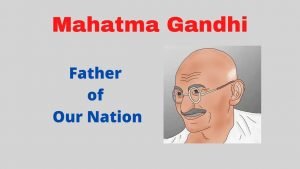
Quit India Movement
Mahatma Gandhi started Individual Satyagraha in 1940 and selected Vinoba Bhave and Nehru for that. He also started the Quit India Movement on 8th August 1942 and gave the call “Do or Die”. Almost all the Congress leaders who mattered were arrested and put behind the bars. The workers and employees struck work in factories and offices and students absented themselves from attending schools and colleges. The shopkeepers closed their shutters. In the aftermath, though never desired or intended by Gandhiji, there were signs of revolt in the army and if earlier there had been the Gadar Party and martyrdom of Bhagat Singh and others, now the Indian National Army led by Subhash Chandra Bose and others, became a reality.
Gandhiji was assassinated by Nathuram Vinayak Godse on 30 January 1948 at the Birla House in Delhi. He died at 5:17 pm. His last word was ‘He Ram, He Ram. Nathuram Godse used an Italian Beritta Pistol to shoot at Gandhiji.
Mahatma Gandhi’s grandson Tushar Gandhi led the second Dandi March from March 12-April 17, 2005 on the 75th anniversary of Dandi March. Gandhiji’s autobiography “My Experiments with Truth” was written in 1922 while he was in Jail. It describes his life from 1869 to 1921. It was translated into English by Mahadev Desai.
Conclusion
The fact is that Gandhiji was not just a political leader. His approach was holistic and his views were there in all fields of life. He was as much a political leader as a spiritual and religious seer and social reformer. Even his views on such matters as education, health, economy, morality, nationalism, internationalism, the welfare of the youth, children, and women, etc. cannot be easily brushed aside.
One of the great dreams of Gandhiji was the establishment of Grama Swaraj. Gandhiji said, “ India lives in villages”. Mahatma Gandhi started Sewagram Ashram on 30 April 1936. He said Nonviolence is not one form it is the only form of direct action. He also said Truth and nonviolence are my Gods and Untouchability is a crime against God and mankind. We all must take active participation in celebrating Gandhi Jayanti to remember his teaching and beliefs.
Short Essay on Mahatma Gandhi 500 words
This short essay on Mahatma Gandhi in English 500 words is suitable for students and children in classes 3, 4, 5, and 6.
Mohan Das Karamchand Gandhi was born on 2 October 1869 in Porbander in Gujarat. He belonged to a well-to-do family, his father being attached to the royal court at Rajkot. He is the greatest leader that India has ever produced.
Mahatma Gandhi was sent to school at the age of seven. He was not quite good at studies but he took great care of his character. In this, his mother played a crucial role in his life.
Mahatma Gandhi completed his matriculation in 1888 and went to England for higher studies. Gandhiji did law in England and returned to India as a barrister in 1891. He started to practice at Rajkot and Bombay but failed. He was a young man of shy nature and it is said that when he appeared before the judge for the first time in order to plead for a case, he could not utter a single word.
Mahatma Gandhi’s first important confrontation with the British Government came at Champaran in Bihar in 1917 when he raised his voice to demand the cessation of exploitation of cultivators and planters of that place.
One of the most important movements started by Gandhiji was the famous Dandi March which was started on 12th March 1930 to get Indians the right of making salt from the seawater. The most important movement started by Gandhiji was Quit India Movement. It was started on 8th August 1942.
One great aspect of Gandhiji’s personality was his broad humanity. He was a genuine lover of man as much as of God and spiritual aspects of life. He was greatly influenced by the Indian epics, the Ramayana and Mahabharata, and loved to read the Gita, an English translation of which had actually changed his life.
Mahatma Gandhi was assassinated on 30th January 1948, but his theories of truth, non-violence, and supremacy of means over ends cannot be lost sight of.
After reading the above essay on Mahatma Gandhi. CBSE Digital Education provides 100+ important facts about Mahatma Gandhi.
100+ Fact about Mahatma Gandhi
Mohandas Karamchand Gandhi is called the Father of the Nation. He was born on 2 October 1869 at Porbandar in Gujarat as the son of Karamchand and his fourth wife ‘Putlibai’. Mahatma Gandhi was a freedom activist and a powerful political leader who played an important role in India’s struggle for Independence against British rule of India.

Mahatma Gandhi Important Facts
- Father of Mahatma Gandhi = Karamchand Gandhi
- Mother of Mahatma Gandhi = Putli bai
- Wife of Mahatma Gandhi = Kasturba Gandhi
- The political teacher of Mahatma Gandhi was Gopal Krishna Gokhale
- Famous student of Mahatma Gandhi = Meera ben
- The actual name of Meera ben is Madlene Slade
- Four son’s of Mahatma Gandhi = Harilal, Manilal, Ramdas, Devdas
- In 1888, Gandhi Ji went to England for the study of law.
- In 1891, he got the title of Barrister.
- In 1893, Gandhiji went to South Africa for the case of Abdullah.
- In 1894, he founded Natal Congress in South Africa.
- In 1899, he got Julu and Boar medals in South Africa.
- In 1901, Gandhiji participated in the Calcutta session of congress.
- In 1904, he founded Phoenix Ashram in Durban.
- In 1906, Gandhiji used the word “Satyagraha” for the first time.
- In 1908, Gandhiji went to jail for the first time in South Africa.
- In 1910, he founded Tolstoy form in Johnsburg.
- On 9 Jan 1915, Mahatma Gandhi arrived in India from South Africa at Apollo port in Mumbai. January 9 is observed as ‘Pravasi Bharatiya Divas’ to commemorate this.
- In 1915, Gandhiji got the title of Kesar-e-hind from the Britisher.
- In 1915, Gandhiji founded Sabarmati Ashram in Gujarat.
- In 1918 he started two weeklies – Yong India in English and Navjeevan in Gujarati.
- Gandhiji abandoned his title Kaiser-i-Hind in protest against Jallianwalabagh Massacre.
- In 1924, Mahatma Gandhi was the president of the Belgaum session of congress in Karnataka.
Mahatma Gandhi was assassinated by Nadhuram Vinayak Godse on 30 January 1948 at Birla’s house in Delhi. He died at 5:17 pm. “He ram, He ram” was his last words. Godse used an Italian Beretta Pistol to shoot at Gandhiji. Gandhiyum Godseyum is a book written by N.K Krishnavarier.
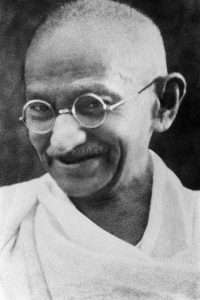
Nicknames of Mahatma Gandhi
- Father of nation
- Mahatma
- Half naked beggar
- Bapu
- One man boundary force
- Malang baba
- Magician
- King of beggars
Who gave his nickname to Mahatma Gandhi?
- Mahatma Gandhi was called the father of the nation by Subhash Chandra bose.
- Gandhiji is called mahatma by Rabindra Nath Tagore.
- Gandhi was called a half-naked beggar by wisdom Churchill.
- Gandhiji is called “Bapu” by Pandit Jawahar Lal Nehru.
- Mahatma Gandhi called the one-man boundary by Lord Mountbatten.
- Mahatma Gandhi was called “Malang Baba” by Khudai Khidmatgod.
- Mahatma is called “Magician” by sheik Mujib-ur-Rehman.
- Gandhiji is called “King of Beggars” by Pandit Madan Mohan Malviya.
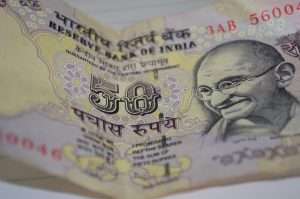
All freedom movements led by Mahatma Gandhi
- In 1917, Mahatma Gandhi started the first movement in India which is called “Champaran Satyagraha”. After this Satyagraha, Gandhiji got the title of “Mahatma” by Rabindra Nath Tagore. This Satyagraha is related to Indigo workers.
- In 1918, Mahatma Gandhi started Ahmadabad mil Mazdoor Andolan.
- In 1918, Mahatma Gandhi started Kheda Satyagraha with Sardar Vallabh Bhai Patel.
- On 30 March 1919, Mahatma Gandhi started Rollatt Act. This Satyagrah was called the first national movement of Gandhiji.
- In 1919, Mahatma Gandhi started the Khilafat Movement. This movement is also called the Indian Muslim movement.
- Gandhiji launched the non-cooperation movement on 1 August 1920 which caused the violent incident at Chauri Chaura in UP. This incident initiated Gandhiji to suspend the movement in 1922.
- In 1922, Mahatma Gandhi started Chauri Chaura’s conspiracy.
- The only Congress session presided by Gandhiji was the one held at Belgaum in 1924.
- The civil disobedience movement ran from 1930 to 1931.
- Mahatma Gandhi started his historic Dandi march on 12 March 1930. This Satyagraha is related to Salt Satyagraha.
- The 1st round table conference was held in 1930 in London.
- The 2nd round table conference was held in 1931. Mahatma Gandhi participated in the second round table conference.
- The 3rd round table conference was held in 1932.
- Gandhi-Irwin’s pact was held on 5 March 1931.
- Intending to educate Untouchability Gandhiji founded the All India Harijan Samaj in 1932. He started his journey for Harijan upliftment from Wardha Ashram in Maharashtra.
- Pune pact was held in 1932.
- Mahatma Gandhi called low-class people ‘Harijan’ which means sons of God. He started the weekly Harijan in 1933.
- Gandhiji called the Temple Entry Proclamation a wonder of the Modern Age.
- Individual Satyagraha was held in 1940.
- On 1942 August 9 Gandhiji started the Quit India Movement and gave the call ‘ Do or Die. Gandhiji called Cripps Mission(1942) “a post-dated cheque on a drowning bank.
- The period from 1947 to 1964 is called contemporary history.
French Novelist who wrote the biography of Mahatma Gandhi was Romain Rolland. The original autobiography of Gandhiji written in the Gujarati language was ‘ Sathya Na Karega’. Liberty or Death written by Patrick French deals with antagonism in Gandhi’s Life. Mahatma Gandhi called his hanging clock my little dictator.
Important Book related to Mahatma Gandhi
- ‘Gandhi’s Prisoner’ is a book written by Uma Dupfeli Mistri, daughter of Gandhiji’s son, Manilal.
- ‘I follow Mahatma’ is a book written by K.M. Munshi.
- K Narayan wrote “ Waiting for the Mahatma”.
- ‘Aweekwith Gandhi, Gandhi, and Stalin and Life of Mahatma Gandhi’ are a book written by Fischer.
- Gandhiji’s autobiography “ My Experiments with Truth’ was written in 1922 while he was in jail. It describes his life from 1869 to 1921. It was translated into English by Mahadev Desai.
“Generations to come it may scare believe that such a one as this ever in flesh and blood walked upon this earth”, Einstein said about Gandhiji. “Truth and non-violence are my Gods” Gandhiji. Untouchability is a crime against God and mankind Gandhiji.
Important Point about Mahatma Gandhi
- “I Follow Mahatma” is a book written by K.M. Munshi.
- Gopalkrishna Gokhale was the political guru of Gandhiji.
- Leon Tolstoy is considered the spiritual guru of Gandhiji.
- The original autobiography of Gandhiji written in the Gujarati language was ‘Sathya na Karogo’.
- French Novelist who wrote the biography of Gandhiji was Romain Rolland.
- The name ‘Gurudev’ was given to Tagore by Gandhiji.
- Gandhiji called the Temple Entry Proclamation a Wonder of the Modern Age.
- Gandhiji called low-class people Harijan which means ‘Sons of God.
Frequently Asked Question (FAQ)
Q1. What is the full name of Mahatma Gandhi?
Answer: The full name of Mahatma Gandhi is Mohan Das Karamchand Gandhi.
Q2. Who was the political guru of Mahatma Gandhi?
Answer: Gopal Krishna Gokhale
Q3. When was Mahatma Gandhi Born?
Answer: Gandhiji was born on 2nd October 1869 in Porbander Gujarat.
Q4. When did Mahatma Gandhi return to India?
Answer: Mahatma Gandhi gained a lot of experience in South Africa and then return to India in 1915.
Suggested Article –
- Essay on Indira Gandhi
- Essay on Lal Bahadur Shastri
- Essay on APJ Abdul Kalam
- Essay on Rabindra Nath Tagore
- Essay on Dr. Rajendra Prasad
- Essay on Nelson Mandela
- Essay on Narendra Modi
- Essay on Ram Nath Kovind
I hope you like this article about the essay on Mahatma Gandhi. If you want to ask any queries regarding the essay on Mahatma Gandhi in English, then message us in the comment section, and we will reply to you soon.
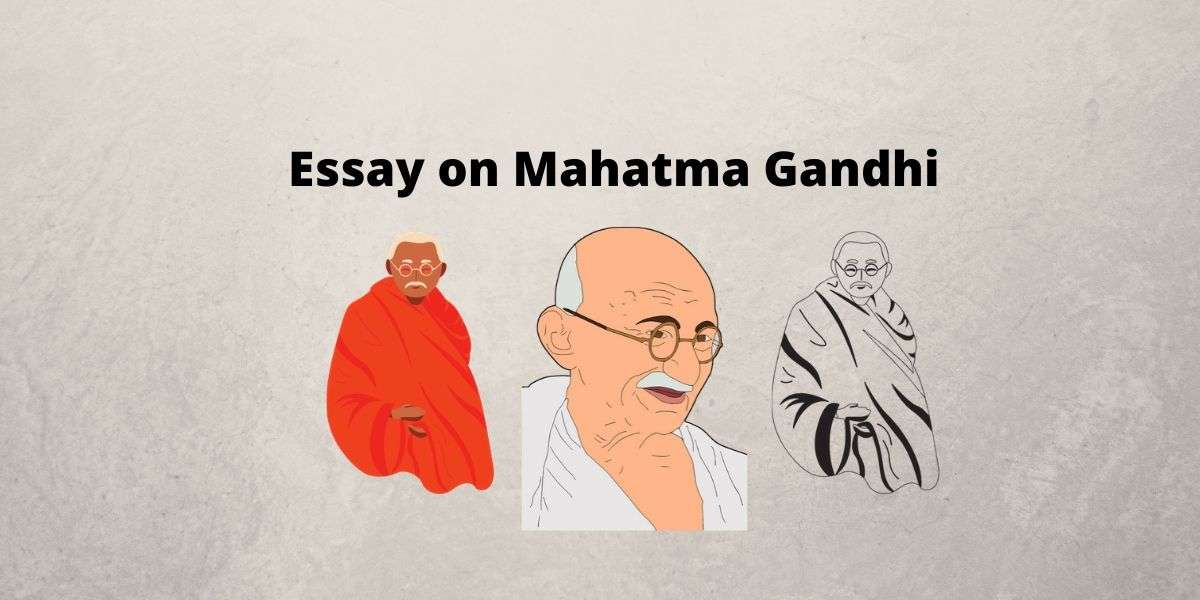
Amazing essay